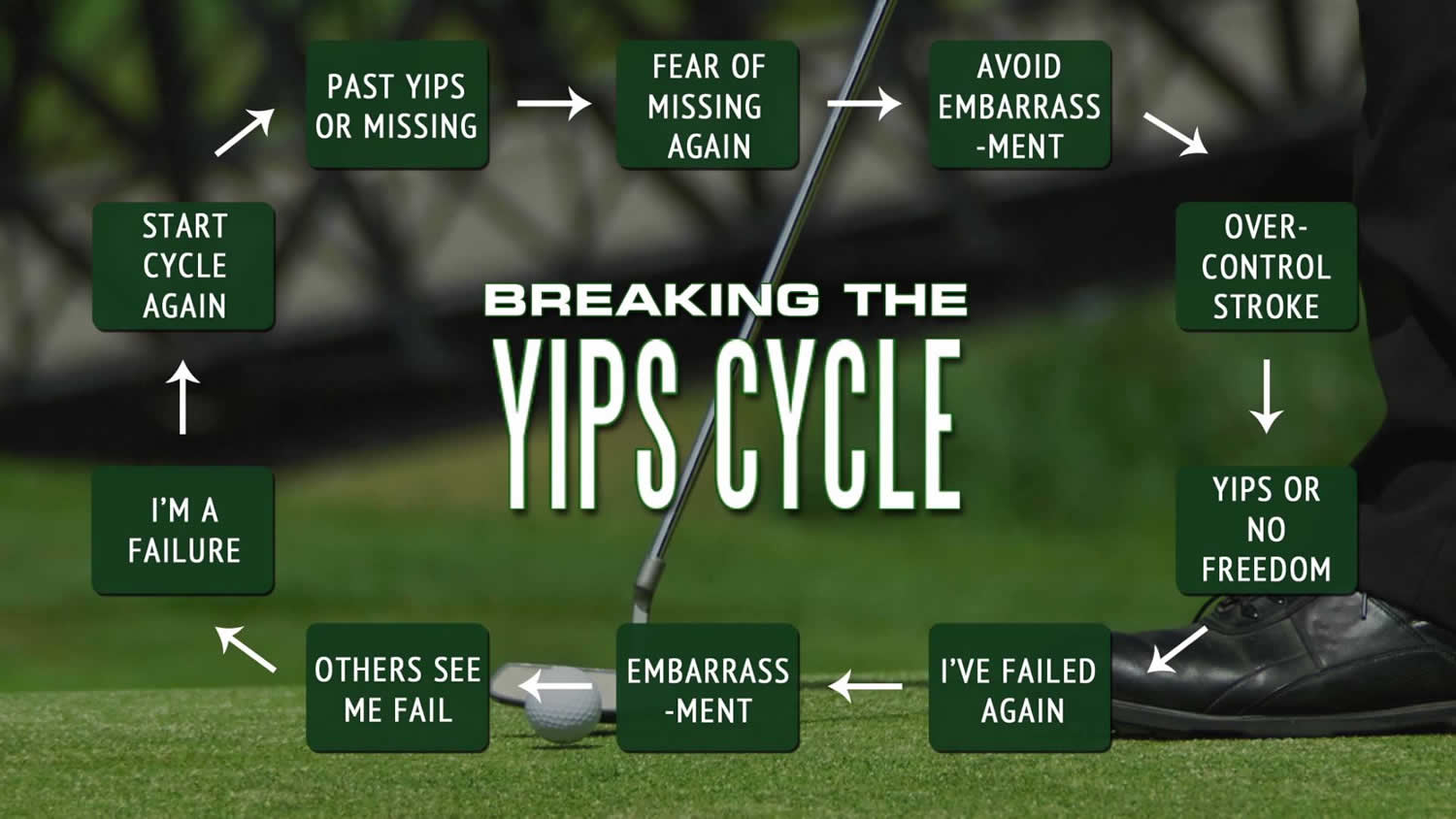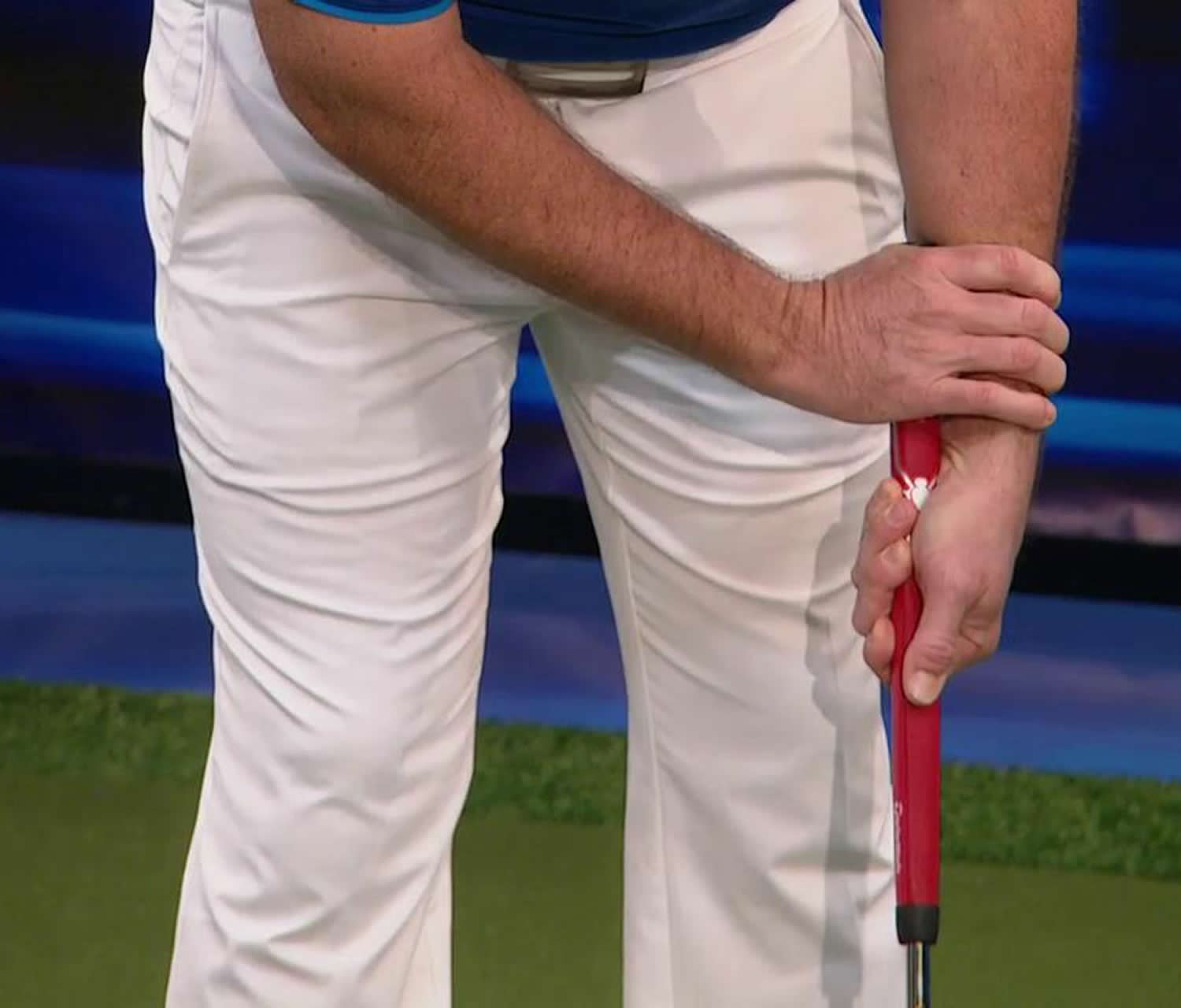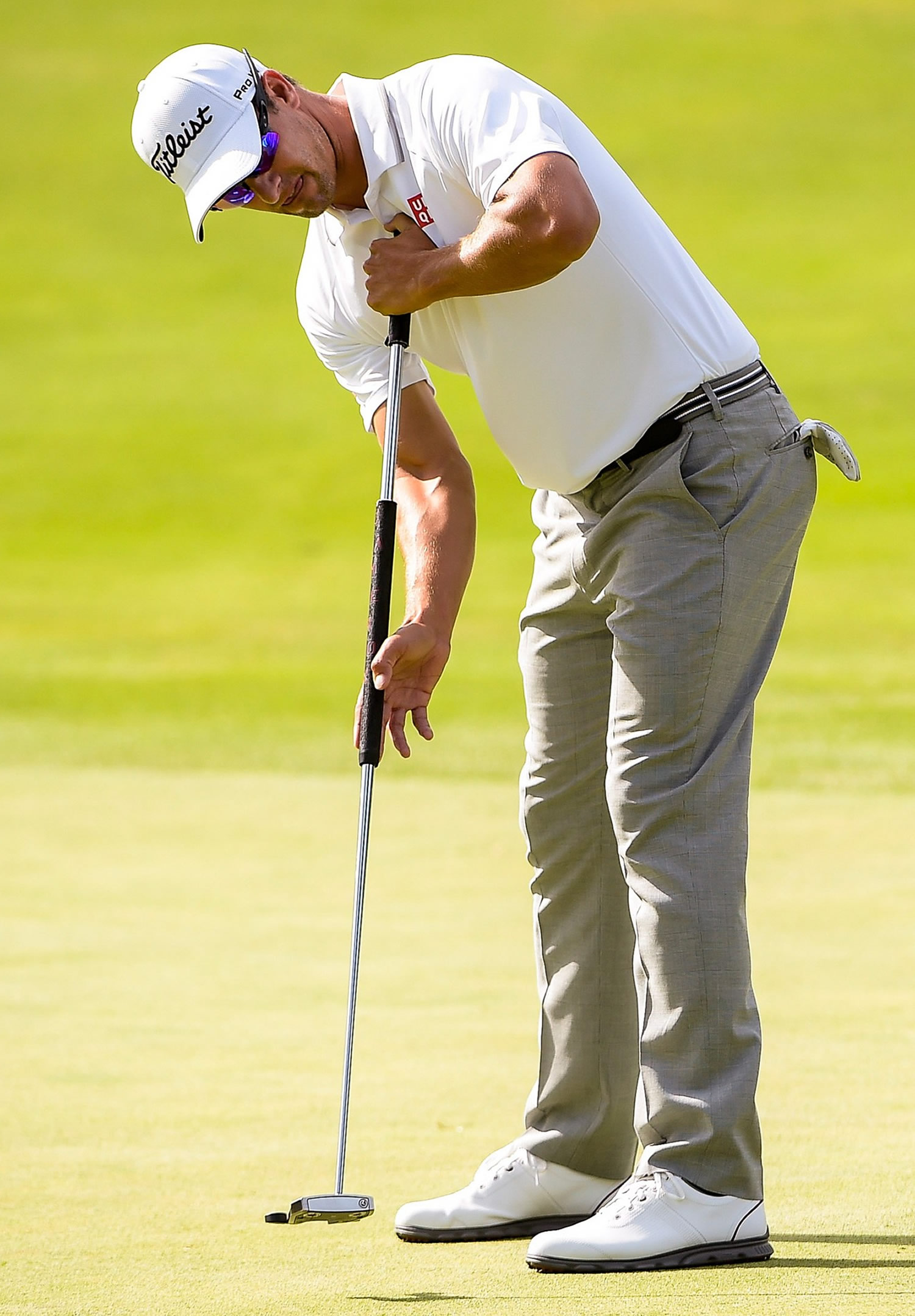Contents
What are the yips
The yips is a multi-aetiological phenomenon that is characterized by an involuntary movement during the execution of a fine motor skill (e.g., a golf putt) that can affect a golfer’s putting performance 1) and it is a common phenomenon, with a reported prevalence ranging from 28 to 48% 2). However, the yips can also affect people who play other sports — such as cricket, darts and baseball. The cause of the yips remains unclear.
These involuntary movements, usually twisting and jerks of the wrist and lower arm shortly before hitting the ball, disturb the execution of a smooth, controlled putt, resulting in poor performance 3). The putting yips is proposed to be measured by the estimation of the performance and the movement variability over repeated trials of putts with the dominant arm from a short distance 4)10.1016/j.humov.2013.04.004 https://www.ncbi.nlm.nih.gov/pubmed/24016710)). Yips-affected golfers show a higher movement variability and a lower performance compared to unaffected golfers 5).
Putting is one of the most important strokes in golf and has received extensive attention in research 6). Like all precision sports (e.g., bowling, archery, and darts), golf requires accurate movements to direct an object toward a goal location 7). Some famous golf players, such as Bernhard Langer, struggled in their careers because they suffered from the putting yips, which does not allow the execution of accurate movements.
Different yips theories have been reported in the literature. The predominant model is Smith et al.’s 8) continuum model, which places yips on a continuum anchored by a neurological and a psychological origin. It assumes that both neurological and psychological mechanisms have explanatory power, but their proportion of contribution to the occurrence of the yips can vary within the affected athlete, and this determines the type of yips.
- Type I yips describes athletes who exhibit mainly neurological symptoms associated with task-specific focal dystonia. This neurological movement disorder is defined as involuntary muscular contractions that lead to repetitive movements or abnormal postures of one body part, which occur exclusively during the execution of one specific task 9).
- Type II yips characterizes the yips driven by mainly psychological mechanisms related to choking under pressure (choking). Choking is defined as the “process, whereby the individual perceives their resources are insufficient to meet the demands of the situation, and concludes with a significant drop in performance—a choke” 10). “Choking” is also defined as a critical deterioration in the execution of habitual processes as a result of an elevation in anxiety levels under perceived pressure, leading to substandard performance 11).
- An alternative explanation that has received less attention was provided by Marquardt 12). He claimed that the yips is a contextual movement disorder learned by fatal movement or technique strategies. Here, the yips can be seen as a conditioned reaction that occurs only under specific circumstances. For instance, when ball is removed, no yips appeared during the putting swing. In addition, previously learned movements from other sports, such as the tennis stroke, might have an influence on the development of the yips in golf and further explain why novices can be affected by the yips 13).
Empirical evidence to support the validity of these theories is generally missing. According to some study results 14), 15)10.1016/j.humov.2013.04.004 https://www.ncbi.nlm.nih.gov/pubmed/24016710)), the attempt to consciously control one’s own movement during skill execution by the application of explicit and rule-based knowledge did not appear to be responsible for the occurrence of the yips. On the one hand, more studies with different designs are needed to confirm the results.
It now appears that some people have yips that are caused by a focal dystonia, which is a neurological dysfunction affecting specific muscles. Some people have found relief from the yips by changing the way they perform the affected task. For example, a right-handed golfer might try putting left-handed.
The yips symptoms
The most common symptom associated with the yips is an involuntary muscle jerk, although some people experience tremors, twitches, spasms or freezing.
The yips causes
In some people, the yips are a type of focal dystonia, a condition that causes involuntary muscle contractions during a specific task. It’s most likely related to overuse of a certain set of muscles, similar to writer’s cramp. Anxiety worsens the effect.
Some athletes become so anxious and self-focused — overthinking to the point of distraction — that their ability to execute a skill, like putting, is impaired. Choking is an extreme form of performance anxiety that may compromise a golfer’s game.
Risk factors for the yips
Yips tend to be associated with:
- Older age
- More experience playing golf
- Lower handicap
Curing the yips in putting
Because the yips may be related to overuse of specific muscles, a change of technique or equipment may help. Possible strategies include:
- Change your grip. This technique works for many golfers, because it changes the muscles you use to make your putting stroke. However, if you have the type of yips related to performance anxiety, changing your grip likely won’t make much difference.
- Use a different putter. A longer putter allows you to use more of your arms and shoulders and less of your hands and wrists while putting. Other putters are designed with a special grip to help stabilize the hands and wrists.
- Mental skills training. Techniques such as relaxation, visualization or positive thinking can help reduce anxiety, increase concentration and ease fear of the yips.
Figure 1. Change your grip
Note: In the cross-handed grip, shown here, place your left hand below your right hand. Keep your thumbs vertically aligned. This grip applies to right-handed golfers. You need to adjust the grip if you putt left-handed.
Figure 2. Langer grip
Note: In the Langer grip, shown here, you place your left hand low on the putter shaft and align the shaft along your left forearm. Use your right hand to grab your left forearm slightly above the wrist. The grip applies to right-handed golfers. You need to adjust the grip if you putt left-handed.
Figure 3. Sidesaddle grip
Note: In the sidesaddle grip, shown here, face the hole with the ball on the right side of your body. Use your left hand to grip the putter near its top. Place your right hand lower down the putter shaft, palm facing the hole. Bend forward, angling the putter to the right, across the front of your body. You need to adjust the grip if you putt left-handed.
References [ + ]








